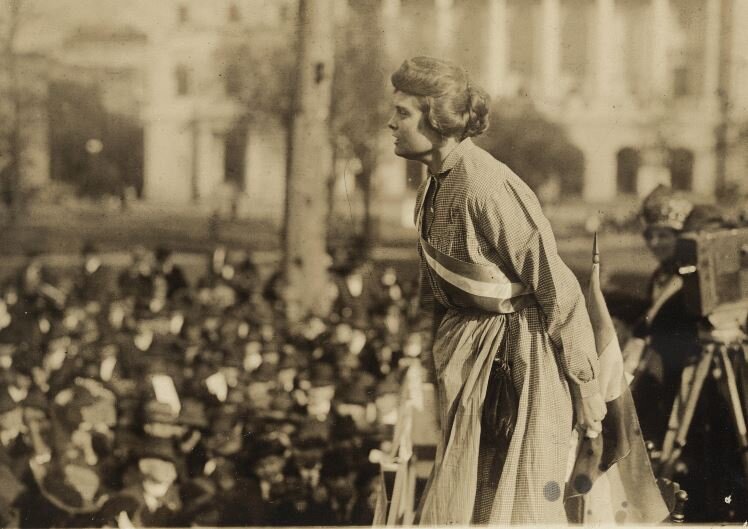From prison to people
In February 1919 the women of the National Women’s Party went on a cross country railway tour to demand immediate action by congress on the women’s suffrage amendment and share the “brutal and lawless measures of the Administration to suppress the lawful agitation for suffrage” with the American public. The tour visited sixteen cities strategically including stops in several southern states where suffrage was not heavily supported. Twenty-Six of the ladies who participated in the tour had been imprisoned for their participation in the Washington DC pickets and watch-fire protests as part of the ‘Silent Sentinels’ and related their experiences to the awaiting crowds in every city they visited. Mrs Abby Scott Baker said of the tour
“We intend to make it clear to the people, that the administration is responsible for the fact that American women are forced to endure imprisonment in their effort to secure the passage of the amendment. The idea that prevails that President Wilson has done everything he could for suffrage. But the fact is that, though he spoke for it, he neither proceeded nor followed his speech, by any effective effort to secure the passage of the amendment; that he has never demanded a party caucus on this measure, as he has on those which he has pushed with vigor: that he has urged the election of men who he knew would vote against suffrage, has failed to denounce the ones who refused to support him on this issue as he has denounced his opponents on other issues"
The original plan for the tour included decorating their train-car with prison bars and suffrage slogans, but the United States railroad administration refused to permit the car to travel unless all decorations were kept inside the car to be viewed through the windows. Despite this setback and the expense of the tour (estimated to be around $20,000) the ladies set out quickly - just a month after it was announced that the issue of suffrage was being postponed indefinitely by the Senate.
Productions included speeches, songs and dramatic reenactments often performed by ladies in replicas of the prison uniforms they wore while detained in the Occoquan Workhouse. Pamphlets and flyers were distributed to the crowd with detailed accounts of their incarceration and a list of grievances against the Wilson administration. The crowds were large and even in places where it was not expected, they were moved to sympathy by the women’s experiences.
Congress passed the 19th amendment just three months after the end of the tour in June 1919. It would be another fourteen months before it was ratified by the states.
Sources: St Louis Globe Democrat 1919; New York Times 1919; The Suffragist, February 1, 1919, pg. 10
~K.Kozemczak













